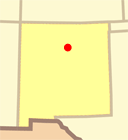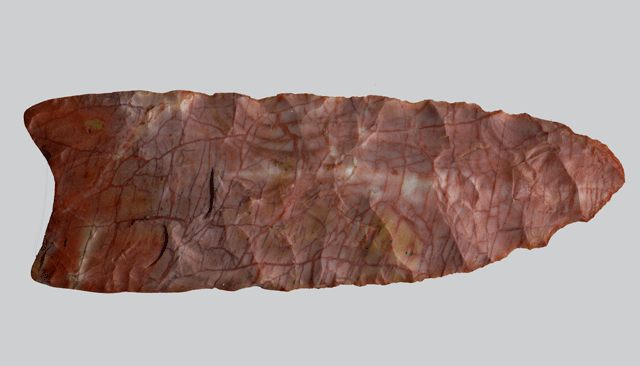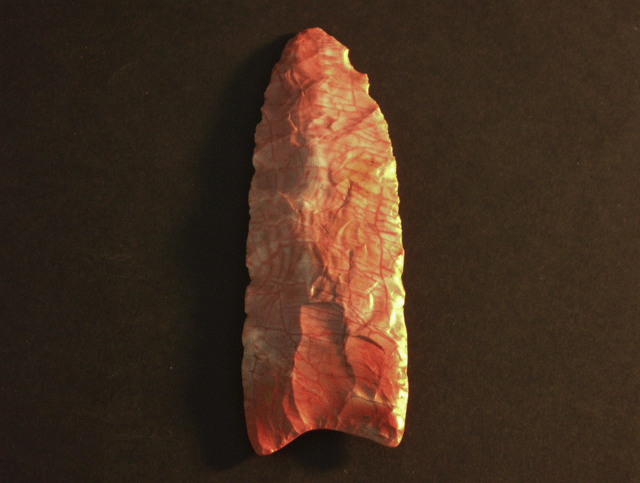


2011.14.1, Clovis point of petrified wood
Clovis culture (11,500–11,000 B.C.)
Found near Santa Fe, New Mexico
Bureau of Land Management collections
Photograph by B. Bernard
This point was found by itself, rather than in with other remains. It may have been a point lost during hunting. It is 9 centimeters (3 1/2 inches) long. The base and lower edges (to the left in this picture) are heavily ground. Basal grinding is common on Paleoindian points, and most likely was done so that the sinew wrapping would not be cut by the edges of the point.
Although the raw material appears to be chert, a careful inspection shows that it is petrified wood. If you know the source of this petrified wood, please let us know!
The next photograph shows the other side of the Clovis point. This side includes a typical "basal flute," meaning a flake removal scar extending up from the base, but it's difficult to see in the photo. The following photo was taken using a low-angle light source, and shows the flute more clearly


All content copyright © Maxwell Museum of Anthropology, University of New Mexico. High-resolution versions of photographs may be ordered from the photo archives. Please make note of the catalogue numbers. For more information please visit the photo archives web page
Page last revised on December 3, 2013. Please report problems to toh@unm.edu